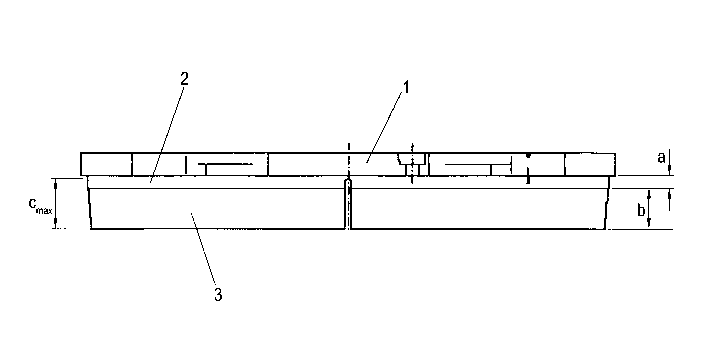Some of the information on this Web page has been provided by external sources. The Government of Canada is not responsible for the accuracy, reliability or currency of the information supplied by external sources. Users wishing to rely upon this information should consult directly with the source of the information. Content provided by external sources is not subject to official languages, privacy and accessibility requirements.
Any discrepancies in the text and image of the Claims and Abstract are due to differing posting times. Text of the Claims and Abstract are posted:
| (12) Patent Application: | (11) CA 2957988 |
|---|---|
| (54) English Title: | BRAKE PAD OF A DISC BRAKE |
| (54) French Title: | GARNITURE DE FREIN D'UN FREIN A DISQUE |
| Status: | Deemed Abandoned and Beyond the Period of Reinstatement - Pending Response to Notice of Disregarded Communication |
| (51) International Patent Classification (IPC): |
|
|---|---|
| (72) Inventors : |
|
| (73) Owners : |
|
| (71) Applicants : |
|
| (74) Agent: | SMART & BIGGAR LP |
| (74) Associate agent: | |
| (45) Issued: | |
| (86) PCT Filing Date: | 2015-07-15 |
| (87) Open to Public Inspection: | 2016-02-18 |
| Availability of licence: | N/A |
| Dedicated to the Public: | N/A |
| (25) Language of filing: | English |
| Patent Cooperation Treaty (PCT): | Yes |
|---|---|
| (86) PCT Filing Number: | PCT/EP2015/066097 |
| (87) International Publication Number: | WO 2016023698 |
| (85) National Entry: | 2017-02-13 |
| (30) Application Priority Data: | ||||||
|---|---|---|---|---|---|---|
|
A brake pad of a disc brake, having a pad carrier plate (1) and an intermediate layer (2) which is fastened to the bottom surface thereof and carries an abrasive friction lining (3) is configured in such a way that the thickness (b) of the unused friction lining (3) is less than or equal to a predefined maximum wear dimension (cmax), wherein the thickness (b) of the friction lining (3) plus part of the thickness (8) of the intermediate layer (2) corresponds to the wear dimension (cmax).
L'invention concerne une garniture de frein d'un frein à disque, comportant une plaque de support (1) de garniture et une couche intermédiaire (2) fixée sur la surface de base de la plaque et portant une garniture de friction abrasive (3). L'épaisseur (b) de la garniture de friction (3) non utilisée est inférieure ou égale à une valeur d'usure maximale (cmax), et l'épaisseur (b) de la garniture de friction (3) correspond à la valeur d'usure maximale (cmax) plus une partie de l'épaisseur (a) de la couche intermédiaire (2).
Note: Claims are shown in the official language in which they were submitted.
Note: Descriptions are shown in the official language in which they were submitted.

2024-08-01:As part of the Next Generation Patents (NGP) transition, the Canadian Patents Database (CPD) now contains a more detailed Event History, which replicates the Event Log of our new back-office solution.
Please note that "Inactive:" events refers to events no longer in use in our new back-office solution.
For a clearer understanding of the status of the application/patent presented on this page, the site Disclaimer , as well as the definitions for Patent , Event History , Maintenance Fee and Payment History should be consulted.
| Description | Date |
|---|---|
| Application Not Reinstated by Deadline | 2019-07-16 |
| Time Limit for Reversal Expired | 2019-07-16 |
| Deemed Abandoned - Failure to Respond to Maintenance Fee Notice | 2018-07-16 |
| Inactive: Cover page published | 2017-02-23 |
| Inactive: First IPC assigned | 2017-02-22 |
| Inactive: Notice - National entry - No RFE | 2017-02-21 |
| Inactive: IPC assigned | 2017-02-16 |
| Inactive: IPC assigned | 2017-02-16 |
| Application Received - PCT | 2017-02-16 |
| National Entry Requirements Determined Compliant | 2017-02-13 |
| Application Published (Open to Public Inspection) | 2016-02-18 |
| Abandonment Date | Reason | Reinstatement Date |
|---|---|---|
| 2018-07-16 |
The last payment was received on 2017-07-07
Note : If the full payment has not been received on or before the date indicated, a further fee may be required which may be one of the following
Please refer to the CIPO Patent Fees web page to see all current fee amounts.
| Fee Type | Anniversary Year | Due Date | Paid Date |
|---|---|---|---|
| Basic national fee - standard | 2017-02-13 | ||
| MF (application, 2nd anniv.) - standard | 02 | 2017-07-17 | 2017-07-07 |
Note: Records showing the ownership history in alphabetical order.
| Current Owners on Record |
|---|
| KNORR-BREMSE SYSTEME FUER NUTZFAHRZEUGE GMBH |
| Past Owners on Record |
|---|
| DIRK DRESEN |